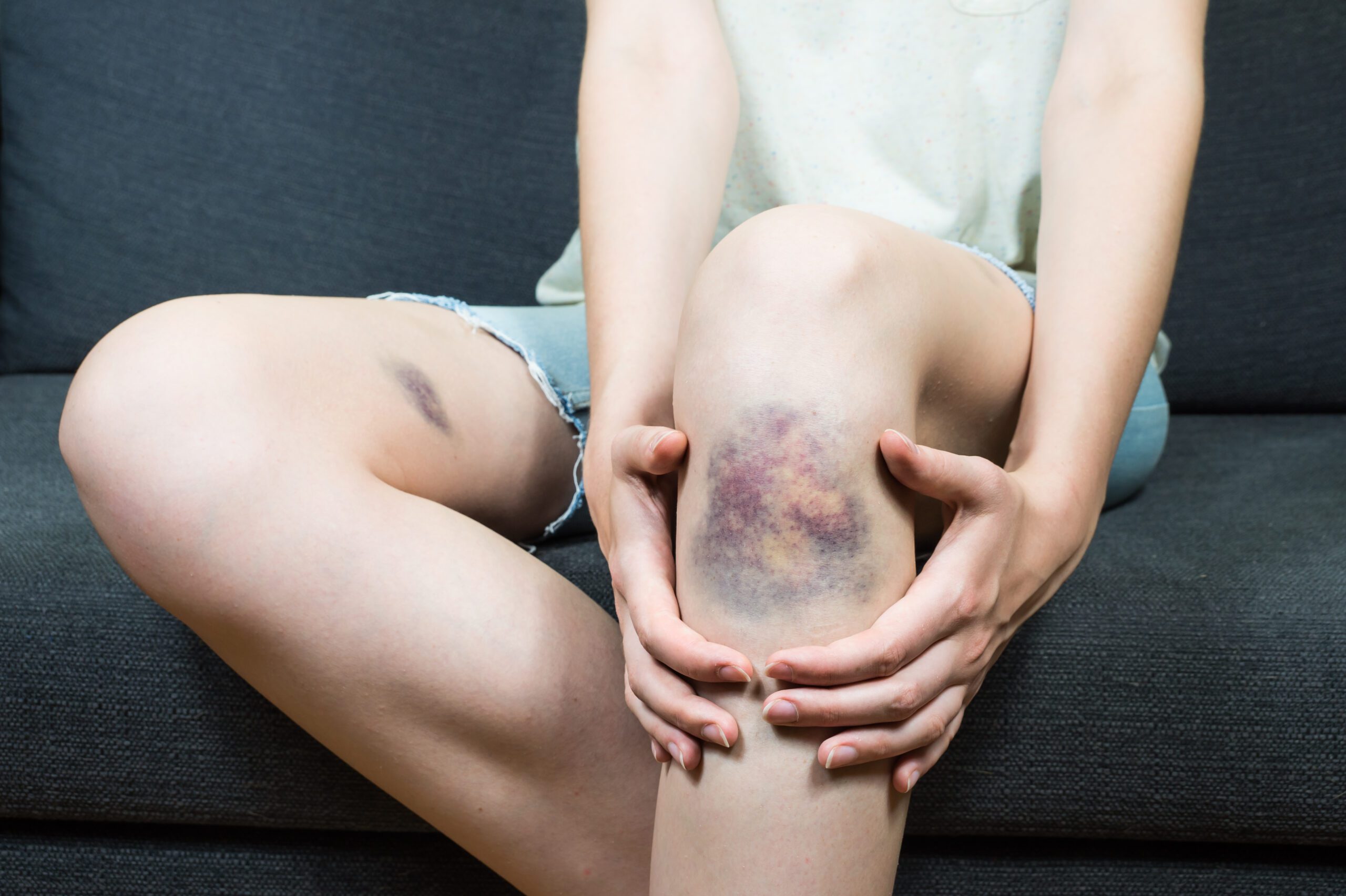Bruises: those painful splotches of swelling and discoloration that stain our body often without notice or warning as a result of the damage it withstands, either internal or external. They come in several shapes, sizes and colors and can occur anywhere on the body.
Breaking it Down
Bruises are a common type of injury that occur when the skin, blood vessels, and underlying tissues of our bodies are damaged due to a blunt force impact or other physical trauma. When a part of the body is struck with enough pressure, the blood vessels beneath the skin may rupture. This causes blood to leak out and pool into the tissues surrounding the afflicted area. This can result in a visible discoloration of the skin, ranging from a reddish-purple hue to a yellow or even greenish tinge as the bruise heals. According to the Cleveland Clinic, bruises are often painful and may cause swelling or stiffness, but, in most cases, they resolve on their own within a few days to a few weeks, depending on the severity of the injury.
Contributing Factors
There are a variety of outside factors that can dramatically impact your body’s likelihood of bruising. Most prevalent among these is age. According to the Mayo Clinic, as we gradually develop into older adults, our skin becomes thinner and we lose some of the protective fatty layer that helps cushion blood vessels from injury, leaving us ultimately more susceptible to bruising. Some over-the-counter drugs can also contribute to bruising.
“Ibuprofen and other related drugs increase bleeding and bruising for the life of the drug in your system – 6-24 hours, depending on the drug,” said local physician Jennifer Sidman, MD, a local physician. “Drugs like aspirin increase bleeding and bruising throughout the life of our platelets, which is 90 days. If you use either of these medications regularly, expect easy bruising.”
How to Treat
Like many common and relatively short-term injuries, bruises can be treated with the tried-and-true RICE method, according to the American Academy of Orthopaedic Surgeons.
The RICE recovery treatment consists of:
REST: Protect the injured area from further harm by halting physical activity. You may also use a protective device (i.e., crutches, sling).
ICE: Use cold packs for approximately 20 minutes at a time, several times a day. Do not apply ice directly on the skin, as it can potentially lead to further damage.
COMPRESSION: Lightly wrap the injured area in a soft bandage or an elastic wrap. Compressing an injury helps reduce swelling while increasing blood flow to the damaged area.
ELEVATION: If possible, raise the injured area to a level above the heart. This lowers blood pressure in the afflicted area to help limit further bleeding.
Something to Look Out For
Bruises are occasionally a sign of a potentially more serious underlying problem. Bruising, or excessive platelets, might also be an indication that your blood cells are carrying leukemia (cancer of the blood cells). These bruises are different from the ones we’re used to seeing: they might be a darker hue or have an irregular shape. Bruises indicative of cancer might also appear on parts of the body where they do not commonly occur, like on the head, face, thighs or back. They will last longer and could even appear to spread or multiply.
If you are ever skeptical or uneasy about a bruise or blotch on your skin, be sure to seek out medical counsel from a trusted medical professional, like a hematologist or oncologist.
Related Articles:
Pro’s and Con’s of Chewing Gum

